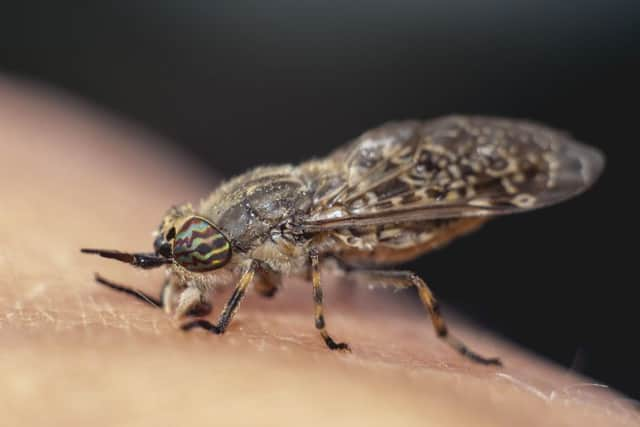Stable advice for when horseflies go on summer attack
Horseflies thrive in the heat, especially near stables, ponds, woodlands and grassy areas – and when they bite, you know you’ve been bitten.
Also known as clegs, these dark-coloured creatures are only about 2cm long but they have razor-sharp claws which cut into the skin, rather than just piercing it.
Advertisement
Hide AdAdvertisement
Hide AdThe British Pest Control Association says rural areas are most likely to see increased numbers of horseflies, due in part to their access to standing water in troughs, ponds and marshes, which provide a food source and an environment to breed.


Natalie Bungay, a field officer for the organisation, says that although the prolonged hot weather is a clue, it is unclear what has caused the surge in insects.
One theory is that as the country heats up, more people than usual are outdoors, increasing the opportunity for insects to bite and sting.
“After a prolonged period of hot weather, without cold and uncomfortable conditions for invertebrate pests, insect numbers may see an increase and infestations can develop if left alone,” Ms Bungay says.
Advertisement
Hide AdAdvertisement
Hide AdMuch like mosquitoes, female horse flies feed off blood, so they can produce eggs. Their saw-like teeth release an anti-coagulant to stop the blood from clotting as they eat. Their bites can take longer to heal than a mosquito.
That, says Dr Daniel Whitmore, senior curator of diptera and siphonaptera at the Natural History Museum, is because mosquitoes release a mild anaesthetic, but horseflies don’t. It also helps to explain why their bites are so painful.
“The horsefly bite is much less sophisticated, likely because usually they have to pierce through much tougher skins than ours when they are feeding on a cow or a horse,’ he says.
An obvious way to avoid injury is to cover up, but it’s not a strategy guaranteed to work.
Advertisement
Hide AdAdvertisement
Hide Ad“Horsefly females have such strong, powerful mouth parts that they can sometimes bite you through your clothes” Dr Whitmore says.
“But obviously they are more likely to go for bare skin.”
You can easily spot a horsefly bite, because red and swollen bumps, resembling blisters and burn marks, appear on the body within minutes.
According to NHS Choices, most people will not feel any other symptoms, but some may also experience a larger red, raised rash, dizziness, weakness and wheezing.
“Obviously, bloodsucking species are annoying,’ says Dr Whitmore, but they nevertheless play a vital role in the ecosystem, with around 4,500 species globally and some 30 in the UK.
Advertisement
Hide AdAdvertisement
Hide Ad“There are some species of horsefly in which both sexes have extremely elongated mouth parts to suck nectar out of long-tubed flowers,” he says.
They are also a key food source for other animals higher up the food chain, and in company with other flying insects, help to support more charismatic species such as bats and birds.
There is conjecture, however, as to who is most at risk from horseflies. Many scientists believe the insects home in on their next victim by sniffing out exhaled carbon dioxide – which would put runners, cyclists and others involved in strenuous outdoor activities at greater risk of being bitten.
If you are unlucky enough to fall victim, the NHS recommends that you ward off infection by keeping the wound clean with antiseptic soap and warm water.
You should avoid scratching the bite, as it won’t stop the itching, and can increase the likelihood of an infection.